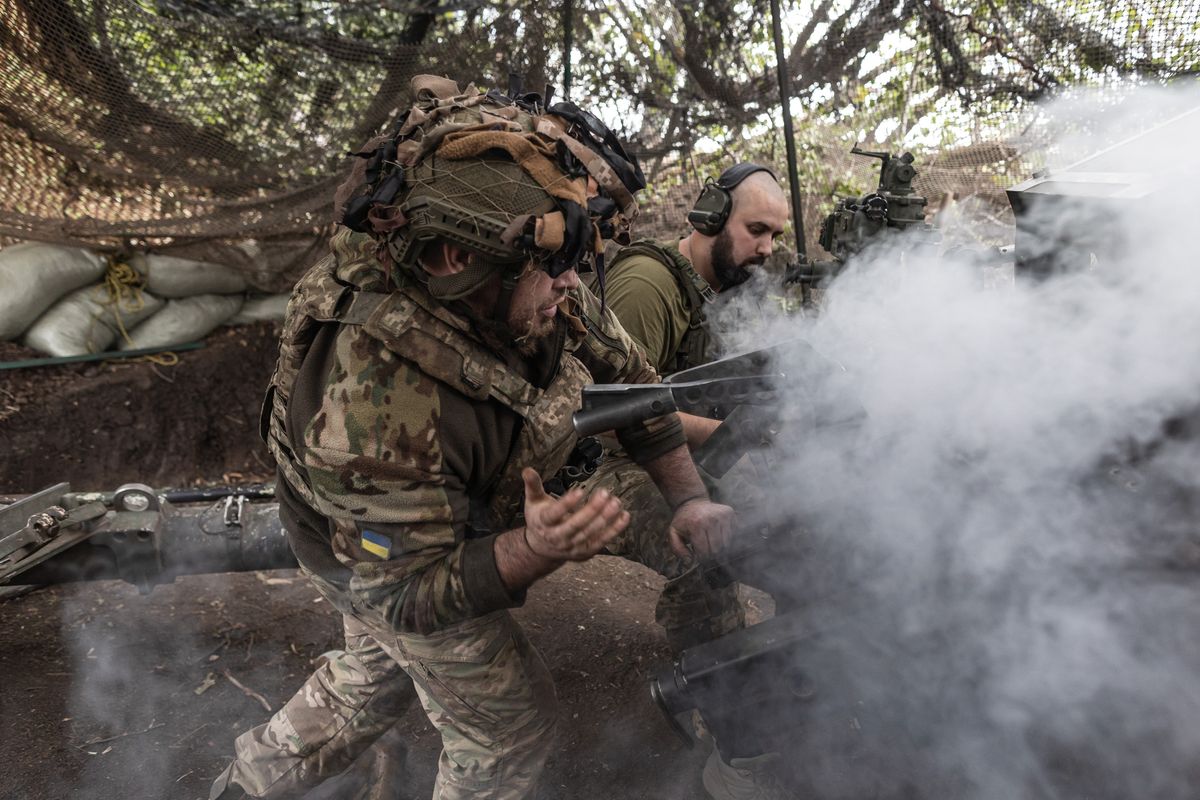CHALK MARKS / OPINION — Intelligence officers in the CIA talk about three things when they are together in the field:
- How bad things are at Headquarters (with sighs and foul language)
- Who got what job and next assignment chances (where gossip meets envy and dreams)
- What they will do in retirement (with the intensity of splicing DNA)
Headquarters officers mostly talk about number one (in the same tenor), when not on Zillow looking at ranch land in Idaho or the fee structure for the golf community near Hilton Head.
CIA officers don’t grouse any more than any other professionals, but they do tend to whinge a bit more specifically. Some of that is because they can only complain about their actual work in rare situations with those involved in the same operation because CIA officers have a uniquely shared set of professional circumstances. An engineer can move from Google to Ford and a doctor can switch clinics. Spies can’t just switch to a new spy agency. Well, a few have, but they tend to end up in prison or characterized as the bad guy in a ‘Chalk Marks’ reviewed film, so it’s not worth discussing.
Intelligence officers in the field have a shelf life. It’s the nature of the work. Officers can continue to work in Headquarters until sunset retirement, but that isn’t why most signed up, so for many, there is a real anticipation of a second career. In years of conversations in the bullpen, conference rooms, and the pub, I realized retirement talk amongst spies tended to focus on two things:
- Where you will retire (the states with no income tax are known by heart)
- What you are going to do for your next career (compensation expectations wildly out of whack with reality)
Intel officers also talk about how their skills are transferable to the private sector. If conversations about this were a power source, Virginia would never see darkness. And frankly, this is true. While the talents of intelligence officers remain under appreciated in the private sector, particularly outside the east coast, all in all, CIA retirees are a fortunate cadre. I know former officers who now lead companies, teach survival skills, sell carpets, lead startups, produce wine, do accounting and sell coffee. It is an eclectic and cool crowd.
The one thing intelligence officers never talk about doing in retirement is more spying. There are three reasons for this:
- We promised to use our powers for good.
- There are rules about these things and, trust me on this, spies are really the most law-abiding people you will meet (talking exclusively about U.S. laws here)
- Spying without a team is near impossible. I could tell you about the infrastructure that is in place to support intelligence officers, but…actually, no I can’t. Please trust me its impressive and vast, and for every Jack Ryan, there are twenty other professionals providing support whose name you will never know.
There is also the reality that spying doesn’t pay like venture capital. It doesn’t offer stock options. Despite this, novels, films, and shows about retired spies make up a huge part of the espionage genre.
There is the “they pulled me back in” storyline, the “past comes back to haunt me” thrill ride, and the retirees who just can’t help but try and save the world.
One of the best things about these stories is that the content tends to be Chalk Marks heavy. Usually, our hero is now in the mainstream and out of desperation and with much reluctance, must share with his or her civilian sidekicks all their “special skills,” ranging from signal sites and dead drops to disarming assassins with a drinking straw. The “one last op/case/heist” is a great trope that can be found in detective fiction, mysteries, and perhaps most famously organized crime dramas, but nothing is better than the ex-spook back in the field.
Not surprisingly, John Le Carre’s 2017 novel, A Legacy of Spies, is the standard bearer for this genre of espionage fiction. It’s hard to dispute that the George Smiley novels aren’t the pinnacle of literary espionage fiction (you can disagree, but it’s not a good look), so there is great symmetry in the last Smiley novel also being the finest “old spy back in the field” novel. The fact that A Legacy of Spies stands as both the conclusion to the Smiley saga and as an intimate sequel to The Spy Who Came in From the Cold, while published 54 years later is bewildering in its achievement and Le Carre’s mastery of fiction.
A Legacy of Spies focuses on the elderly and reluctant Peter Guillam, a key character in The Spy Who Came In From the Cold. Peter is called back into service by a history-obtuse MI6, which is trying to both uncover and hide the past and in George Smiley’s absence, would be happy to sacrifice Peter to their bureaucratic overlords. But in another standard of the genre, these young know nothings always underestimate the ops chops of the old guard. A Legacy of Spies is perhaps the best of Le Carre’s late works, in no small part because it returns to his richest source material, while still allowing him an outlet for his vitriol towards the intelligence service bureaucracy that shaped much of his later fiction.
I offered in my last ‘Chalk Marks’ column that the first sentence to Viet Than Nguyen’s The Sympathizer may be the best opening line in espionage fiction. I feel equally that the first paragraph and chapter of A Legacy of Spies may be the finest beginning in the canon. There is a novel’s worth of tension and meaning in the first paragraph, and a spy’s lifetime of sacrifice and service outlined in the first chapter. There is nothing that could happen to Peter Guillam or any spy that isn’t foreshadowed in the first chapter. These first pages are a reminder that while known as a spy novelist first, Le Carre is one of the finest post-WWII novelists in any genre.
One of my favorite aspects of A Legacy of Spies, besides the elegant Chalk Marks tradecraft, is that it’s really all about George Smiley despite being Peter’s story. While Peter takes center stage, George stands mostly in the wings, shaping the drama and tension. It’s a structural metaphor for the best of tradecraft, where design and purpose remain in the shadows while the spy (an old one) is running in the field.
An enjoyable and recent version of “the past operation comes back to haunt me,” is Tess Gerritsen’s The Spy Coast. (Check out Cipher Brief CEO Suzanne Kelly’s conversation with Gerritsen in The Cover Stories Podcast) Named after the Maine coast where a handful of former CIA spooks have chosen to retire in proximity to one another, The Spy Coast seeks to capitalize on several hot trends in publishing – mystery thrillers, retirees as protagonists, and heroes that are part of a club. Subtitled “The Martini Club Book 1,” Gerritsen’s novel works, and is good beach or airport reading, but it is also victim to its formula. To be fair, I (and many spies I know) love a good martini (gin, up, slowly stirred, always olives), but to this retired spy, a bunch of old spies who can’t outrun the past but can drink martinis, baffle neighbors with their insights and have a book club, just seemed too easy.
The opposite is true of the Thursday Murder Club series by Richard Osman. Osman’s series is ambitious and offers the finest interweaving of retirees, clubs, and thrills but do not let the pulp fiction titles fool you. Osman is a remarkable writer, and these novels (four to date) are complex, original, and contain the richest ensemble of characters of any genre fiction in recent memory. While shelved under mysteries rather than thrillers, by books three and four the murder mysteries are draped in espionage.
One of the four septuagenarians that make up the Thursday Murder Club is Elizabeth, who is one of the best renderings of a retired MI6 officer ever offered, and whose operational history and tradecraft always play a major role in the story. The series gets better with each novel, and by books 3 and 4 we are almost in spy fiction territory, but with just enough organized crime and corpses to keep garden mystery fans on board. I can’t praise this series enough for its tradecraft and its humanity. I thinks it’s fair to say that I care more about Joyce, Elizabeth, Ron and Ibrahim and those they love than I have any other group of characters in a long time. I am definitely getting soft (old).
Novels take time, always well invested, but the on-demand crowd also has a great “they keep bringing me back in” option in the TV show ‘The Old Man’. Starring a wonderfully swarthy but arthritic Jeff Bridges, the first season of ‘The Old Man’ ran in 2022, and the second season will be released later this year. If there is a checklist of tropes for the old spy genre, even beyond those mentioned above, ‘The Old Man’ hits every one of them.
Just want to be left alone? Check. Bad guys won’t leave it be? Dust off the go bag. Drink too much? Uh, yeah. One last op? No. Sigh. Fine, I’ll do it. Impress your new friends with tradecraft? Hold my martini. New partner who just wants to understand? Let me introduce Amy Brenneman.
Add a great soundtrack, John Lithgow as a duplicitous FBI official, a rogue government contractor and tantalizing secrets and you have a perfect summer TV show and time to catch up before season two drops.
As always, please find a ‘Chalk Marks’ ops plan to get you situated and start the summer with some old spies that just want to be left alone but know that we really can’t survive without them:
- Primary Window: Start with A Legacy of Spies (if a refresher is needed watch the “The Spy Came in From the Cold” film first); while reading that, binge “The Old Man” over a week or two. When you hit the beach or the campsite this summer, pick up The Spy Coast for some easy reading hours.
- Alternate Window: Start with book one of The Thursday Murder Club on audio. Sit next to nice windows – take long walks, a daily run, or a good road trip – as it’s an immersive listen.
- Beverage: Primary – whiskey neat or martini up. Alternate – Builder’s Tea (but never after four o’clock, or you’ll never get to sleep)
- Snack: Primary – little sandwiches with no crusts; Alternate – a proper curry.
‘Chalk Marks’, written by Cipher Brief Expert and former senior CIA Officer Mark Davidson is found exclusively in The Cipher Brief.
Read more expert-driven national security insights, perspective and analysis in The Cipher Brief because National Security is Everyone’s Business.













